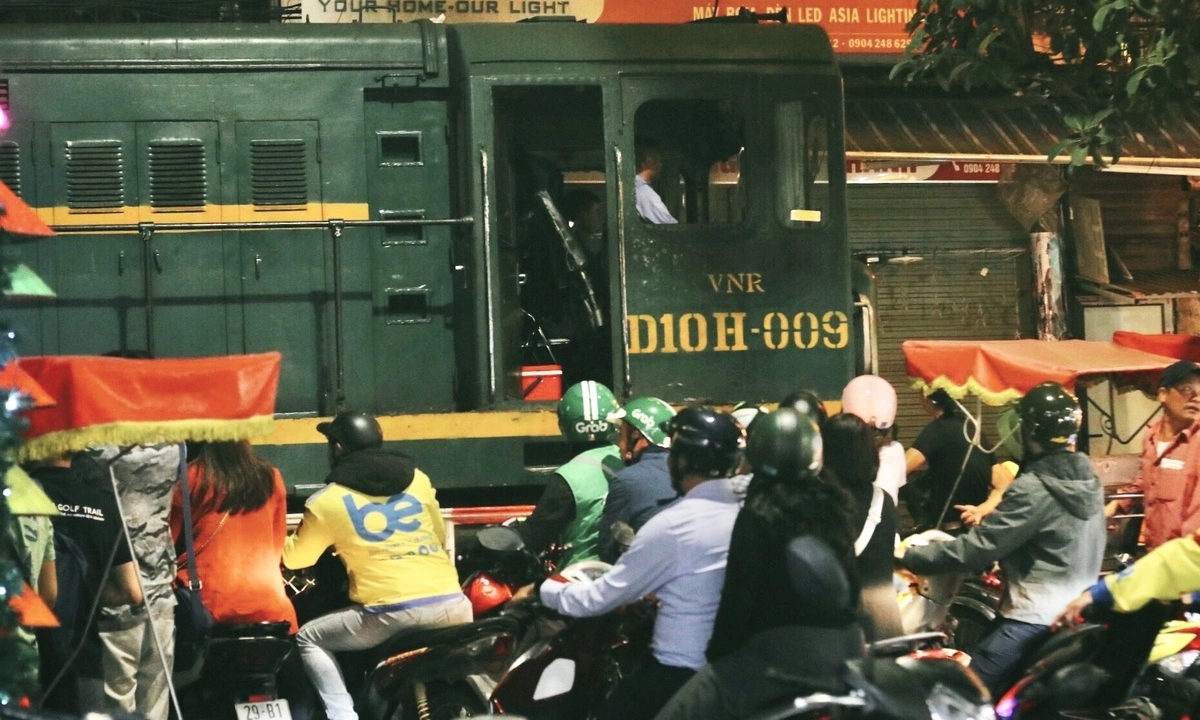Joshua Zukas, a reporter for the American magazine Business Insider with over a decade of experience in Vietnamese tourism and cuisine, believes that the Michelin Guidebook has overlooked several dishes in Hanoi.
He outlines five street eateries in the capital worthy of recognition, including Thanh's goose eatery located at 3 Tran Phu Street, Hoan Kiem District.
Thanh's eatery is located about 20 meters north of the train tracks that run along Tran Phu Street.
Owner Pham Quynh Anh, 37, shared that her mother, Thanh, opened the shop in 1994, and she took over in 2011.
Zukas has been a loyal customer since her mother's time, as he often comes to savor the mixed glass noodles with goose.
The shop features approximately 15 sets of plastic tables and chairs, arranged on a 50 meters square sidewalk, accommodating 30 to 40 customers simultaneously. Operating hours are from 7:30 a.m. to 10 p.m. daily.
The menu offers a wide range of goose-related dishes such as noodle soup, mixed glass noodles with goose, boiled goose, as well as roasted goose with fried garlic, priced between VND50,000 and VND300,000 ($2 to $12).
Zukas' favorite dish, mixed glass noodles with goose, is a favorite among diners.
The eatery utilizes large-sized geese, averaging 3 to 4 kilograms. The geese undergo a thorough cleaning processing, including feather removal and multiple boiling sessions to eliminate any unpleasant odors.
The boiled geese are further cooked in a pot to tenderize the meat and enhance the sweetness of the broth. Quynh Anh shares that the shop uses approximately 4 to 5 kilograms of goose bones daily to prepare the broth.
Bamboo shoots are also included in the broth. Prior to adding them, they undergo a process of peeling, boiling, and being washed three times to eliminate any pungent smell.
Once prepared, the bamboo shoots are thinly sliced, added to the broth, and simmered until soft, absorbing the goose flavor.
When customers order mixed glass noodles, Quynh Anh briefly blanches the noodles in a separate pot of boiling water before immersing them in the goose broth for a minute.
Meanwhile, she chops the goose meat into bite-sized pieces. The blanched noodles are then added to a bowl along with bean sprouts, mini meatballs made of ground pork and wood ear mushrooms, shiitake mushrooms, slices of goose meat, topped with soy sauce and fried shallots.
A portion of mixed glass noodles comes with a small bowl of goose broth seasoned with scallions and saw leaf.
Diners have the option to enhance their meal with kumquat juice, sliced fresh chili, or chili sauce before mixing the noodles and enjoying them.
Zukas complimented the flavorful broth, which effectively covers up any lingering strong taste from the goose meat, making it more palatable to those who may not enjoy such flavors.
Located near the Hanoi Train Street, frequented by many foreigners enjoying the views of passing trains, the eatery has become familiar with many international tourists.
Quynh Anh notes that the peak season for foreign patrons is from September until the year’s end.
Even during off-peak hours, the eatery remains bustling. Regular patron Nguyen Tu (L), an artist, has frequented the spot for nearly two decades.
He often visits for dinner, drawn by its close proximity to his home. Additionally, he frequently invites friends to join him in savoring the goose dishes here.
What distinguishes this establishment for Tu is its captivating ambiance, where patrons can witness the passing trains, often recognized by their whistling noises.
According to the owner, trains typically pass by at 7 p.m., 7:45 p.m., and 8:30 p.m. daily.
Due to limited parking and the open-air setting, Thanh’s eatery can get noisy, especially during train crossings. Diners are advised to arrive early, before peak hours from 7:30 p.m. to 8:30 p.m., to ensure a wider selection of dishes.















